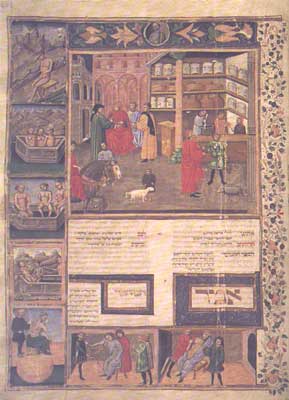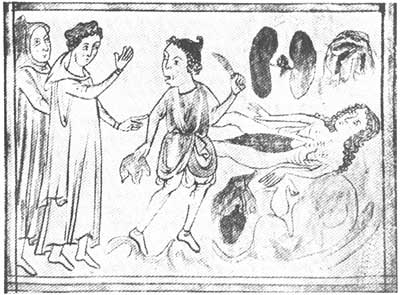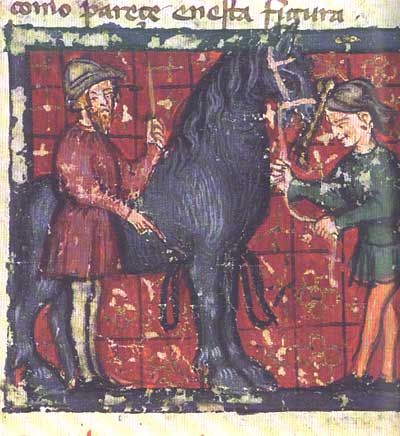The Middle Ages
saw few advances in pathology, despite the major advances of the Arab
world in pharmacy and surgery.

A page from an Italian
copy of the Kitab al-Qanum (Canon of Medicine),
the encyclopaedic opus on medical knowledge compiled by
the Persian Ibn Sina (known in the West as Avicenna)
Frederick II (1194-1250),
crusader, Holy Roman Emperor and founder of the University of Naples,
was the first to legally authorise human dissection.
Dissection of diseased human cadavers became a regular part of university
teaching at Bologna, Italy in the mid 13th century.

Necropsy scene from the 14th century.
Bodleian Library.
For most Europeans, however, dissecting a corpse was
regarded as a desecration. No doubt they were influenced by Pope Boniface
VIII’s Bull, De Sepulturis, of 1300 which pronounced in response
to a common practice amongst crusaders:
“ Persons cutting up bodies of the dead and barbarously
cooking them, in order to separate the bones from the flesh for transportation
and burial in their own country, are by that act excommunicated.”
It was not until 1556 that theologians concluded that “the
dissection of human corpses serves a useful purpose, and is therefore
permissible to Christians of the Catholic Church”.
|
|




